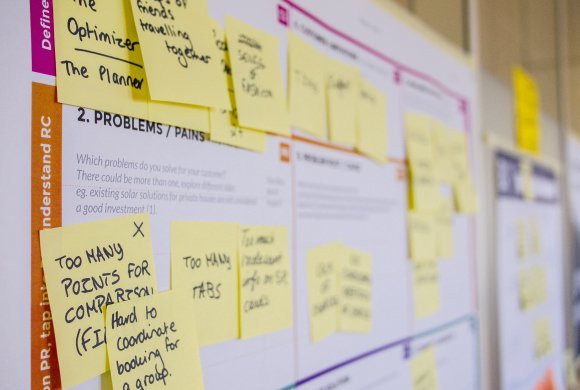On any given day, if you’re a small business owner who’s managing a team, you may find yourself reviewing resumes, interviewing for vacant positions, dealing with performance issues, training staff, resolving employee conflicts, filling out HR forms, looking up employment standards, coaching the team – the list goes on. Small business owners often can’t afford to hire an HR staff person, so they struggle to manage things on their own. This results in frustration (“I’m not an HR person!”), HR tasks falling through the cracks (“I’ve GOT to remember to send in that ROE!”), and a team that’s not being managed well. As your business grows, so does the amount of time you find yourself spending on people issues.
Systems are Key
So how can small businesses manage their HR with small or no budgets? The key is creating systems and processes that are sustainable and repeatable for often-used HR functions. Creating repeatable systems takes time and effort up front, and is often the reason business owners don’t do it, but it pays dividends in the end.
Imagine if you had a checklist of 10 steps (and templates) to follow every time you hired, wouldn’t it be easier than starting from scratch every time? Wouldn’t it also make it easier for someone else (another manager or supervisor) to pick up that process instead of you having to do it all on your own?
While there are many HR components necessary to manage your team, there are three areas in which building systems can help small business owners be more effective and efficient.
1) Hiring
Hiring too fast or hiring desperate almost always ends up in bad hires, resulting in costly turnover and a drain on management time and energy. To create your system:
- Write down all your hiring steps (timeline, creating posting and job description, resume review, assessments, interviews, reference checks, etc.).
- Next, create templates for each repeatable part. For example, job postings can have standard phrasing about your business and the kinds of people you want to hire. All you have to add are the specifics around the new vacancy. Interviews can be streamlined by preparing general questions in advance and adding job-specific questions when you interview.
- Establish a timeline and work backwards from the employee start date and put each step into your calendar.
This package is ready to go and the process can be repeated in less time with less hassle. Next time you need to hire, follow the checklist, enter the timeline into your calendar, edit the templates and you’re ready to go.
2) Performance Management
A simplified performance management (PM) process will also save you time.
Long, arduous, metric-heavy reviews are often not sustainable for small businesses. An ongoing, agile, continuous-feedback approach is more likely to give you better results. Remember that employees prefer immediate, in-the-moment feedback as opposed to a dump-truck approach once a year. Here are the steps:
- Determine a realistic, manageable PM timeline that fits your business model and industry (Annual review? Quarterly reviews? Monthly check-ins?). Create forms for each session (templates are your friend). You may want to mix it up. If you’re doing quarterly sessions to follow up annual reviews, use the opportunity to talk about what’s important to your staff (the Gallup Q12 is a great place to start http://www.goalbusters.net/uploads/2/2/0/4/22040464/gallup_q12.pdf)
- Diarize all PM sessions and create follow-up actions so your calendar prompts you to do them.
This process can be a huge time saver and give you a more effective way to motivate and engage your team.
3) Training and Development
The evidence that investing in development creates high employee engagement is overwhelming, but small businesses can struggle with the costs, but creative growth opportunities don’t have to cost a lot. Here are a few ideas:
- Cross-training – could Susan train Jillian to operate the switchboard?
- In-house peer training – can Sally teach the sales team how to use Excel more effectively?
- Lunch and learns – could you bring in interesting speakers from your community?
- Leadership training or mentoring – could managers coach and develop high potential employees?
- Creative team days – what about a day dedicated to creative, brainstorming, and blue-sky thinking on an upcoming project?
The key to success is a consistent, scheduled approach.
- Decide at the beginning of the year how many training activities are realistic. A speaker once a month? In house training every quarter? Two hours of cross-training every month?
- Put the dates in the calendar. This avoids the “Oh no! Tomorrow is lunch and learn and there’s no speaker!” scenario.
- Create diarized tasks that relate to each event. Perhaps the first week of the month is your time to find the lunch and learn speaker, or a month prior to in-house training – work with your team to flesh out opportunities.
- Document all these steps so you can repeat them the following year.
Success Strategies
Each of these processes take time to set up, but you only have to do the hard work once. After that it’s “pick up and go”. Here are some final thoughts to ensure your success.
- Keep your processes simple. The more complicated they are, the less likely you are to follow through.
- Put in the hard work up front. It’s the key to being able to sustain the plans in the future.
- Be realistic about what you can do. It may be nice to have 3 interviews but is it doable? Fewer events with greater consistency are better than lots of events that don’t happen.
- Evaluate and edit. If you’ve tried a process and it’s not working, figure out why and adjust.
While systems are helpful in streamlining your processes, Human Resources involves “humans” so it’s important to note that there will always be circumstances where something or someone messes up the system you have carefully created, however, this should be the exception rather than the rule. Deal with these anomalies as they arise and return to your system.
Finally, if you just don’t have the time or expertise to build these systems for your business, consider hiring an HR consultant to assist you with building them. This investment gives you the tools you need to execute them in the future.





